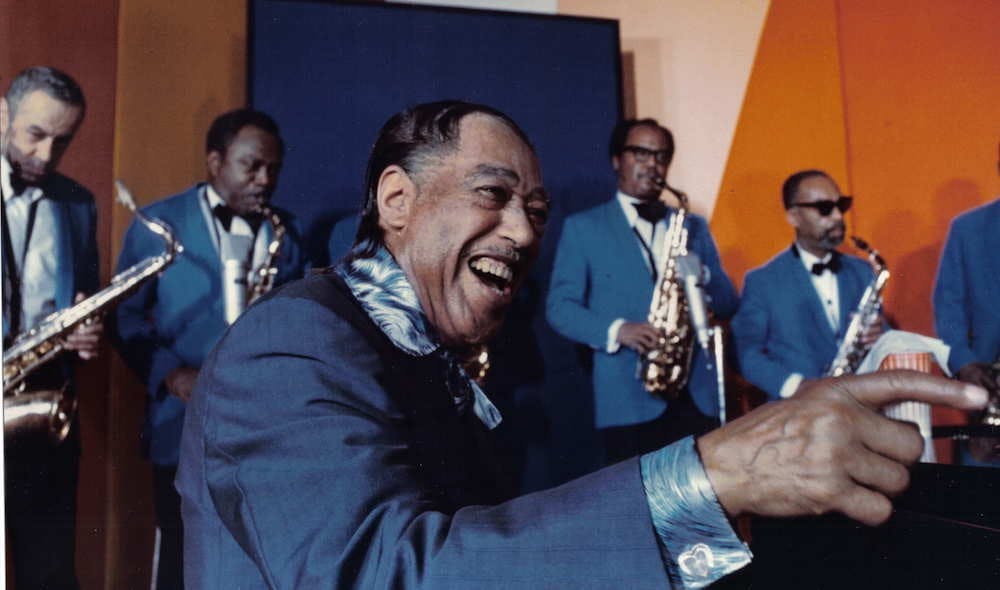On Saturday, I went to breakfast with my mom in celebration of her birthday. Upon greeting her, we traded kisses on our respective cheeks and exchanged a warm salutation. As is our custom, she then gave me this week’s copy of the New Yorker, and its felicitous cover, artfully illustrated by Kadir Nelson, jointly stoked feelings of refulgent optimism and deep reflection. The cover donned Harlem Renaissance giants like the legendary composer and pianist– and my favorite musician– Duke Ellington, as well as skilled authors James Baldwin and Zora Neale Hurston and Civil Rights leader Malcolm X. Seeing them displayed so elegantly, resolutely, and unapologetically infused into me an insuperable sense of pride about the history of black men and women in America.
I thought about how far the United States has come in its strides toward realizing the high standard of its lofty creed, as etched in its audacious Declaration: “all men are created equal.” I was then beset with a tempest of harsh and unpalatable truths regarding the remaining hurdles involved in eradicating the calcified inequities of black and white in America. Could these thoughts have possibly been reconcilable? Of course, for this paradox encapsulates the continuing story of black people. It also proves an inexorable fact. The beauty of Black History month is as evident as its glaring necessity.
In 1925, noted Howard University philosophy professor, Alain L. Locke, wrote simply– and presciently– “the Negro today wishes to be known for what he is.” He noted that this attitude stemmed from decades of the systematic degradation of blacks’ self-worth and the dismissal of their intellectual capacities. This aspiration is simultaneously a motivation to prove, as Ralph Ellison wrote, that “[we are] people of flesh and blood, lipid and fiber,” and that, as he wrote sarcastically, we “might even be said to have a mind.”
This desire is exemplified in the cultural proliferation, led by the aforementioned figures. Ellington demonstrated the capacity of black people for musical creativity and complexity through his ingenious, syncopated jazz scores and improvisational recordings with the members of his illustrious band. Malcolm opined not just for the expansion of basic human liberties for persons with darker hues, but also for blacks to be proud of their looks and to believe fervently in their own efficacy. Writers Baldwin and Hurston portrayed snapshots of the vivacious nature of black people. Black History Month perfectly celebrates this tradition.
This trend continues on today. We see it in the pointed writings of esteemed Atlantic columnist, Ta-Nehisi Coates. We see it in the scholarship of Neil DeGrasse Tyson. We see it in the sometimes florid, sometimes rugged, and always candid prose of the late Maya Angelou. It is evident in the inspirational novels of Nobel Laureate, Toni Morrison. Of course, it has wonderfully culminated in the election and ascendancy of Barack and Michelle Obama.
Today, while we have made many strides, we still face obstacles in alleviating the lingering damages of our racist past. Redlining and school segregation (which, by some accounts, still persist to the present day) have forestalled hopes of social mobility for many African-Americans. Hostile and discriminatory policing and stop-and-frisk policies have posed affronts to the constitutional rights and, in the words of Dr. King, the “human personality” of African-Americans in urban communities. Mass incarceration for mostly non-violent drug offenses continues to claim the lives of many black males. As is often mentioned, blacks, while using drugs at commensurate rates to those of whites, are four times more likely to be arrested and prosecuted. Institutional impediments (i.e. lack of access to investment, credit, and banking services, and structural unemployment) remain prevalent. These, among other factors, have contributed to the gross 20-to-1 ratio of white median household wealth to black median household wealth.
Black History Month serves as a reminder for Americans of all colors to appreciate the breadth and totality of black contributions to American culture. Simultaneously, it serves to remind us of the battles which still need to be waged for racial justice. It also goes to prove a truth that, while axiomatic for white children, is sadly uncertain for black kids. Black History Month tells black girls and boys that they too can be successful. It reaffirms that they, with all of their cultural proclivities and unique beauty, can be anything they aspire to be. Black History Month is a small token of a collective message. This is who we are. This is from whence we came. This is where we ought to go. It demonstrates that we too are large and contain multitudes.
Contact contributor Jabari A. Lucas at jabari.lucas@richmond.edu
Support independent student media
You can make a tax-deductible donation by clicking the button below, which takes you to our secure PayPal account. The page is set up to receive contributions in whatever amount you designate. We look forward to using the money we raise to further our mission of providing honest and accurate information to students, faculty, staff, alumni and others in the general public.
Donate Now



